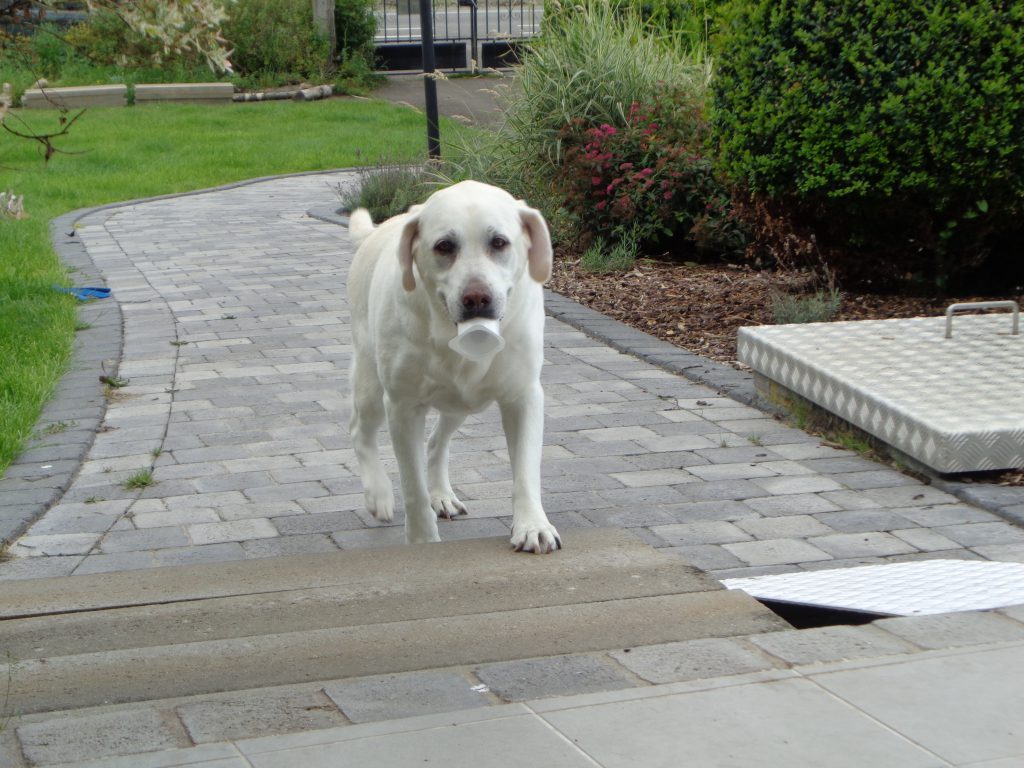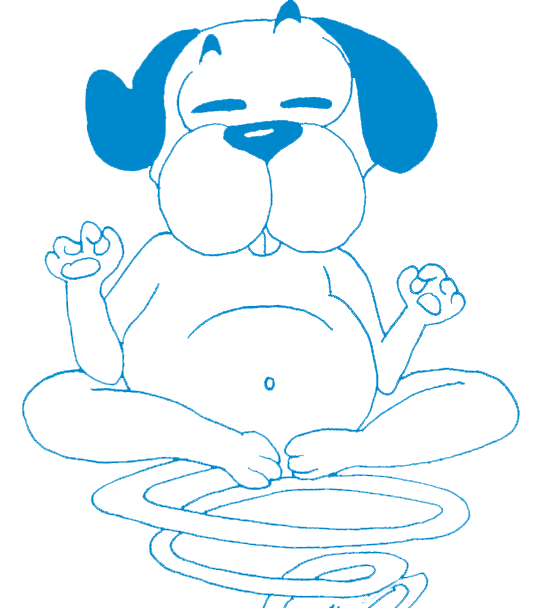What is it?
Here’s how to suggest to our dogs to use their nose to find good things to eat, hidden (in a box, under a yoghurt container). The search for food being part of the basic survival reflexes, all dogs have this innate talent.
What do we need?
- Treats that our dog enjoys,
- Yoghurt pots or any other container.
Description and progression
Step 1: Place a single treat, not too small, under a yoghurt container while the dog is watching. We start in a quiet room in the house (where he feels comfortable). You can also make small holes in the bottom of the jar so that the smell is more easily perceptible.
Step 2: A single treat of the same size as in step 1, in full view of the dog, placed under a yoghurt pot, ± 20 cm from a second yoghurt pot (under which no treat is placed).
Stage 3: A single treat of the same size as in stages 1 and 2, placed under a yoghurt pot while the dog is not watching, ± 20 cm from a second yoghurt pot (under which no treat is placed). It is important to add only one difficulty at a time: either the size of the candy, or the number of pots, or the nature of the container, or the environment (calm, noisy, distracting,…), either in or out of the dog’s sight. Only one parameter changes between two stages of the exercise.
Step 4: A small treat, while the dog is not watching, with 2 yoghurt containers.
Step 5: A small treat, while the dog is not watching, with 3 jars of yoghurt.
![]() Video: hidden cheese with 3 pots
Video: hidden cheese with 3 pots
![]() Video: hidden cheese with 3 pots of yoghurt
Video: hidden cheese with 3 pots of yoghurt
Step 6: A small treat, again in full view of the dog, placed under a Tupperware box, ± 20 cm from another Tupperware box (under which no treat is placed).
When a new parameter causes great difficulty (change of container for example), one can decrease the level of difficulty of one of the other parameters (again at sight or reduce the number of containers for example).
Next steps: we continue to offer increasingly difficult searches, modifying only one parameter at a time:
- after working at home, one can tackle working outdoors, where there will be more distractions,
- you can play with the distance between containers.
Metal bucket:
![]() Video: Cheese under a metal bucket
Video: Cheese under a metal bucket
In the garden:
![]() Video: short distance
Video: short distance
![]() Video: longer distance
Video: longer distance
![]() Video: in the garden
Video: in the garden
![]() Video: hidden behind the lavender
Video: hidden behind the lavender
![]() Video: hidden behind a bush
Video: hidden behind a bush
Learning without pressure
It is possible that our dog may take a break: he simply leaves the play area and goes off to other activities or simply goes to rest. There is no need to insist and make him continue the exercise. If we force our dog, it is no longer a game but it becomes an obligation which will not necessarily leave him with a good memory.
Scent work requires a lot of concentration. Beginners need time to develop their abilities as they go along. And let’s not forget that learning takes place optimally when the dog is not stressed and therefore not put under pressure.
In the same vein, there is no need to “motivate” our dog by repeating the request (“search” for example). While our dog is focused on each of the candies to be found, he is mainly using his sight and sense of smell. Repetitions of “search”, “search”, “search” distract him and overwhelm his ears and brain with useless information. This is only distraction, not motivation.
There is no need to help him, for example, by pointing to the right container or lifting it up to deliver the treat. The game is for our dogs to develop their olfactory skills and resourcefulness, it is not a game of speed or performance. When our dog stops searching, the game is over either temporarily because a few moments of rest will be enough for him or permanently depending on our dog. Let’s respect his learning pace.
Let’s also respect his recovery pace: a busy weekend means a greater need for rest. The ideal is then to offer our dog an easier search game: a few treats scattered, without hiding them, at home or in the lawn will do the trick (see “the treat search game”).
Those who do not cope
If our dog is not interested in this game, a question arises: does he like the treats we offer him? It is up to us to offer him treats that live up to his expectations.
If our dog likes these treats but he is not interested in research, it is probably because it is too difficult for him (physically if our dog is old, sick or injured / emotionally if our dog is not at ease in the environment for example / if we have skipped steps in the learning progression).
Some dogs may also be able to accept the game with some containers but not with others: a metal container can be noisy, and therefore frightening; a container that is too heavy to knock over can be discouraging. It is up to us to offer them a game that matches their physical and/or emotional abilities.
Some dogs do not like to share their food. It is essential to offer these dogs the opportunity to play the game on their own. It is up to us to offer a game adapted to the social abilities of our dog.
Others are “obsessed” with certain objects, such as a plastic can, a cone or any other container that we could use. For these dogs, it is important not to have objects that are “too interesting”. They will give their full attention to the containers, not the hidden treat.

When the container is more interesting than a treat
TAKEAWAY
- All dogs have this talent;
- Offer treats that our dog likes;
- Increase the difficulty, step by step;
- Offer learning without pressure;
- Offer a game adapted to our dog’s needs, expectations and abilities.

